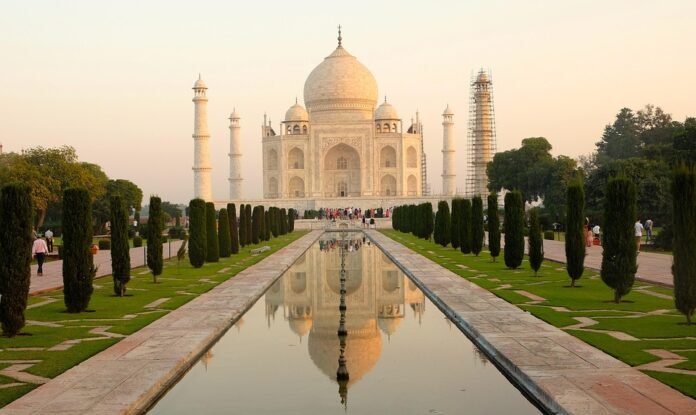Of course. Here is an article about inequality in India, exploring its dimensions, causes, and potential solutions.
Inequality in India: Bridging the Gap Between Rich and Poor
From a Tale of Two Indias to a Nation of Shared Prosperity
In the bustling metropolises of India, a striking paradox unfolds daily. Gleaming skyscrapers housing multinational corporations cast long shadows over sprawling slums where millions struggle for basic necessities. Luxury cars navigate streets alongside hand-pulled rickshaws. This is the "Tale of Two Indias"—one of unprecedented wealth and technological prowess, the other of deep-seated poverty and exclusion. As India charts its course as a global economic powerhouse, the widening chasm between its richest and poorest citizens poses a critical threat to its social fabric and long-term stability.
For decades, India’s story has been one of remarkable economic growth. However, the fruits of this growth have not been shared equally. According to reports by organisations like Oxfam, the concentration of wealth is staggering: the top 1% of the population holds more wealth than the bottom 70%. This isn’t just a statistic; it’s a lived reality that defines opportunities, health outcomes, and futures for over a billion people. Bridging this gap is not merely an economic imperative but a moral and social one.
The Many Faces of Inequality
Inequality in India is a multi-headed hydra, extending far beyond income and wealth.
- Economic Disparity: This is the most visible form. While a new class of billionaires emerges, a significant portion of the population remains in the informal sector, lacking job security, social benefits, and a minimum wage. The pandemic starkly highlighted this vulnerability, as migrant workers, suddenly jobless, were forced into a desperate exodus from cities.
- Opportunity Inequality: The chasm begins at birth. A child born into a wealthy family has access to elite private schools, world-class healthcare, and a network that ensures a pathway to success. In contrast, a child in a rural village or an urban slum often attends an under-resourced public school and relies on an overburdened public healthcare system, limiting their potential from day one.
- Social and Identity-Based Inequality: Historic social hierarchies, particularly the caste system, continue to fuel inequality. Dalits and Adivasis (Scheduled Castes and Tribes) face systemic discrimination that restricts their access to land, jobs, and justice. Gender inequality also persists, with women having lower labour force participation rates, facing a significant gender pay gap, and shouldering a disproportionate burden of unpaid care work.
- Regional Inequality: The divide between urban and rural India is vast. Cities are centers of growth and investment, while many rural areas lag in infrastructure, education, and healthcare, pushing millions to migrate in search of a better life, often only to find precarious living conditions in urban peripheries.
The Vicious Cycle: What Drives the Divide?
The roots of India’s inequality are deep and complex. The economic liberalisation of the 1990s, while spurring growth, also led to policies that favoured capital over labour. Tax cuts for corporations, coupled with a weak social security net, meant that the benefits of growth flowed upwards.
Furthermore, chronic underinvestment in public services like education and health has created a two-tiered system. Those who can afford to opt-out do, leaving the public systems to crumble, which in turn traps the poor in a cycle of poverty. The digital divide has become another powerful driver of inequality, as access to technology, information, and online education becomes crucial for economic participation.
Bridging the Gap: A Path Forward
Addressing a problem of this magnitude requires bold, multi-pronged, and sustained action. The goal is not to penalize success but to build a floor of opportunity through which no one can fall.
-
Progressive and Fairer Tax Policies: Implementing more progressive taxation, including a potential wealth or inheritance tax, could generate significant revenue. This revenue is crucial for funding social programs and reducing the government’s reliance on indirect taxes (like GST on essential goods) that disproportionately affect the poor.
-
Massive Investment in Human Capital: The single most powerful tool for breaking inter-generational poverty is investment in people.
- Education: Revitalising public schools with better funding, modern curricula, and well-trained teachers is non-negotiable.
- Healthcare: Strengthening the public healthcare system to ensure universal access to quality care is essential. Expanding primary healthcare and making medical treatment affordable can prevent families from falling into poverty due to a single health crisis.
-
Strengthening the Social Safety Net: Social security schemes like the Mahatma Gandhi National Rural Employment Guarantee Act (MGNREGA) must be expanded and properly funded. Universal basic income is another idea gaining traction as a potential tool to provide a basic level of financial security. Protecting workers in the informal economy with minimum wage laws, healthcare benefits, and pensions is critical.
- Promoting Inclusive Growth: The focus must shift from growth-at-all-costs to inclusive growth. This means supporting small and medium-sized enterprises (SMEs), which are the largest job creators. Investing in agricultural infrastructure and rural development can help bridge the urban-rural divide. Empowering women by ensuring equal pay, safer workplaces, and access to credit will unlock immense economic potential.
Conclusion: A Promise to Keep
India stands at a crossroads. It can continue on a path where prosperity is confined to a select few, risking social unrest and squandering human potential, or it can choose a more inclusive and equitable future. The popular slogan "Sabka Saath, Sabka Vikas" (Together with all, development for all) must be more than just rhetoric; it must be a guiding principle for policy and action.
Bridging the gap between the rich and poor is the defining challenge of our time. It requires political will, societal empathy, and a collective commitment to building an India where every citizen, regardless of their background, has the chance not just to survive, but to thrive. Only then can India truly fulfill its promise as a vibrant, prosperous, and just democracy.

